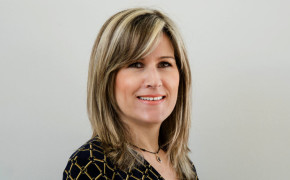Visitors of the 34th Philoxenia Exhibition (2018), had the chance to get to know thematic touristic products through Virtual Reality Technologies.
In the 34th Philoxenia Exhibition, the visitors of the Region of Central Macedonia (RCM) stand had the chance to get to know the thematic touristic products through Virtual and Augmented Reality Technologies. The Palace of Aigai was presented through the use of VR, where the user was able to take part in a serious game wandering in the Palace. More touristic destinations of the RCM were presented through 360o videos, VR headsets and mobile applications. Moreover, augmented reality applications were presented about Mount Olympus. Through the aforementioned techniques, people visiting the Philoxenia expo had the chance to explore touristic destinations through exceptional personal experience.
This practice constitutes a targeted marketing technique that can be implemented in a variety of subjects, including the promotion of low-carbon economy that the e-smartec project targets. Visitors of a relevant expo could have the opportunity to “see” a city road as pedestrian area, and even wander, with the use of VR headsets, in a familiar environment, where the cars have been replaced by bicycles. Through Virtual and Augmented Reality Technologies people could participate in a game, competing with other people in cycling, or they could even use a VR headset to participate in an online meeting of a SUMP consultation, having the opportunity to create a better contact, compared to a more “traditional” online meeting held with the use of cameras and headsets.
Resources needed
The budget to acquire the equipment is relatively low (the equipment can be re-used at different occasions). The 360ο equipment had a cost of around 50.000€ (for the City of Thessaloniki and all the 7 Regional Units of RCM) and it was developed by a private company.
Evidence of success
The success of this practice can be depicted by the amount of citizens that visited the 34th Philoxenia expo and more specifically the stand of Region of Central Macedonia (around 20.000 visitors).
In a future application on the field of low-carbon economy, the results achieved could be monitored through a relevant questionnaire survey on the impression created.
Potential for learning or transfer
The specific practice can easily be transferred to other regions as there are no constraints or difficulties in organizing such an initiative. As it was previously mentioned, if an organization has IT specialists, it could develop a similar application by its own means so the cost of this initiative can be minimized.
Virtual και Augmented Reality, Video 360ο and use of VR headsets are undoubtoubly innovative ways to promote not only touristic destinations, but a variety of subjects, including the promotion of low-carbon economy, as the users are given the opportunity to have exciting experience through impressive high-tech equipment. This strong impression of such a vivid experience, which almost approaches a live event experience, is believed to have excellent results, as a marketing technique.
Tags: Good practice, Technology, Tourism








